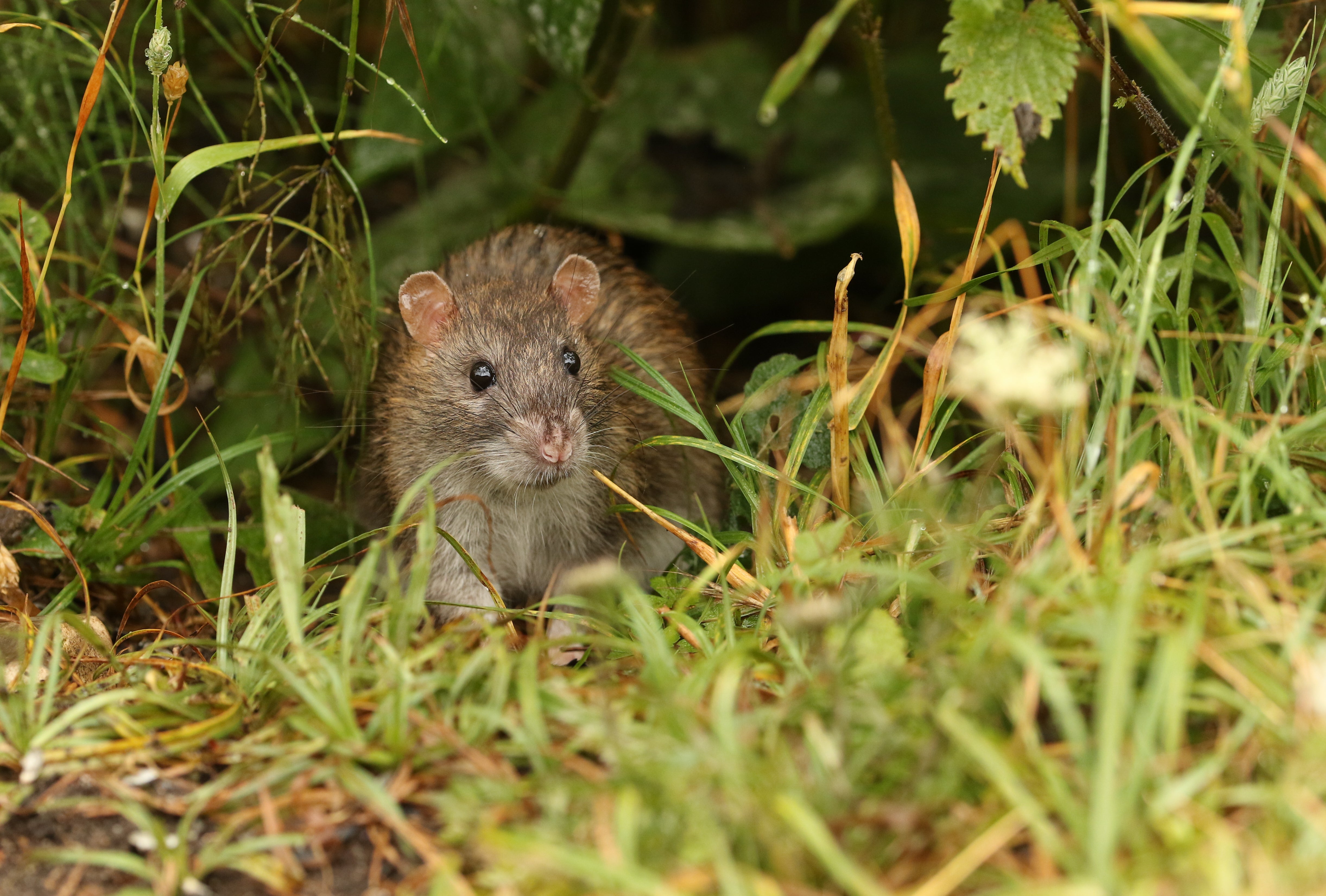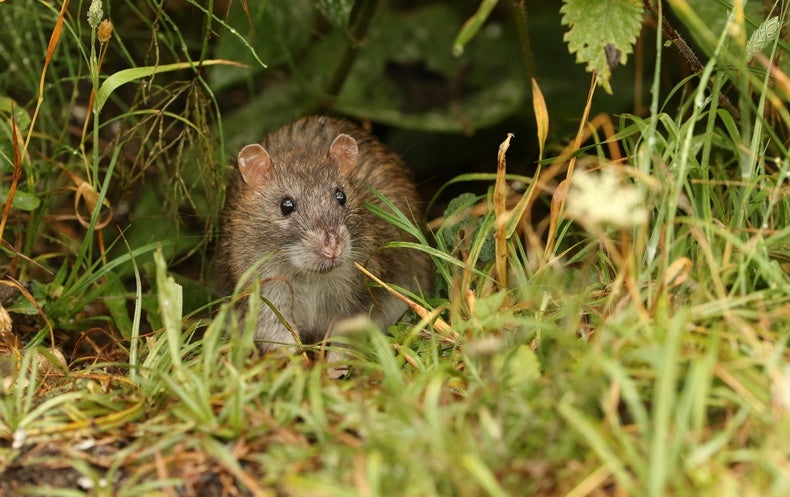
CLIMATEWIRE | Just a year ago, the tiny islet of Irooj in the Marshall Islands was crawling with invasive rats. The hungry rodents had been on the rampage there for decades, gobbling up native seabird eggs and threatening the local biodiversity.
But as of March, the little island has been declared rat-free. That’s thanks to a yearlong campaign to eradicate the rodents and restore the island to its natural condition.
The effort was conducted by the Republic of the Marshall Islands’ Ministry of Natural Resources and Commerce, with help from the Secretariat of the Pacific Regional Environment Program, an intergovernmental organization focused on climate and environmental issues on small islands in the Pacific, and nonprofit Island Conservation, which works to remove invasive species from islands around the world.
“The island feels alive again,” said Kennedy Kaneko, the Republic of the Marshall Islands national invasive species coordinator, in a statement. “Careful monitoring showed zero signs of rats on Irooj. In fact, seabirds and crabs were found in abundance.”
Irooj is just one tiny islet in the long chain of volcanic islands and coral atolls that make up the Marshall Islands, which dot the central Pacific Ocean between Hawaii and the Philippines. Still, it represents a small success in a series of global efforts to eradicate invasive species from small islands, particularly in the tropics.
These efforts, experts say, can help protect fragile island ecosystems, which often house threatened or endangered species, including plants and animals that might not exist anywhere else in the world. They also can help bolster the diverse coral reef ecosystems that surround many tropical islands.
And they can promote resilience to climate change in the process.
Small islands and coral reefs both face existential threats from the effects of climate change, including sea-level rise, warming waters and ocean acidification. Curbing greenhouse gas emissions and halting climate change is the only way to put a real stop to these threats. But by removing extra stressors from the environment, such as harmful invasive species, it can make the ecosystems healthier, hardier and better able to withstand the pressures of global warming.
Small islands around the world historically have contributed little in the way of climate-warming greenhouse gas emissions, added Chad Hanson, deputy vice president of conservation at the nonprofit Island Conservation. Yet they’re suffering disproportionate impacts from climate change.
“Your island communities aren’t the ones that are contributing to climate change,” he said. “But they’re the ones that are experiencing the sea-level rise, they’re experiencing the invasive species that are oftentimes more adaptable to rises in temperatures or changes in soil chemistry, and they can outlast many of the species that are native and endemic.”
Island Conservation is one of the organizations helping to lead the charge against island invasive species. The organization works on sites around the world, with projects in South America, North America, the Pacific and Indian oceans, and the Caribbean, aiming to prevent the extinction of native species. It addresses a variety of invasive species, including both plants and animals, but specializes in vertebrates — such as rats.
Rats have traveled around the world for centuries as stowaways on ships. By some estimates, they’ve reached 90 percent of the world’s islands — and they’ve wreaked havoc in many of the places they’ve invaded. They have a particularly devastating impact on island seabird populations, many of which had few or no natural predators before their arrival.
“Rodents are a generalist,” Hanson said. “So they can feed on vegetation, they can feed on protein sources — that could be directly attacking a bird or eggs or crabs or any of these native species that can be incredibly vulnerable.”
And it’s not just terrestrial organisms that suffer when rats invade. Nearby coral reefs also are at risk.
That’s because corals and seabirds are closely interconnected. Seabirds feed out in the open ocean, and then return to the islands to rest, breed and nest. While they’re ashore, they deposit large quantities of guano — a fancy name for bird poop — all over the island.
This guano is rich in useful nutrients, such as nitrogen and phosphorous. The nutrients eventually run off the island and into the water, where they’re used by corals and algae. Fish come along and eat the algae, and the nutrients move on up the food chain. In this way, they help support the whole coral reef ecosystem.
But once rats move in, everything changes.
“Once you lose the seabirds, you lose this nutrient link,” said Casey Benkwitt, a researcher at Lancaster University who studies coral reefs and other marine ecosystems. “There’s a lot fewer nutrients coming into the system.”
That often leads to problems such as fewer fish, slower-growing fish and lower productivity in reef communities, she added.
One recent study, published in January, demonstrated some of the unexpected consequences of rat-related seabird declines. The study examined sites around the Chagos Archipelago in the Indian Ocean, focusing on a small fish known as the jewel damselfish.
It’s normally an aggressive, territorial species. It lives around coral reefs and spends much of its time staking out and guarding patches of the algae it prefers to graze on, a practice scientists refer to as “farming.” But the study found that damselfish become less territorial when they live around rat-infested islands.
These islands have fewer seabirds and fewer nutrients flowing into the water. As a result, the fish’s favorite algae is less nutritious. And that means it’s not worth it to the fish to expend so much valuable energy guarding its little algae farms.
“Fish on ‘ratty’ islands have to spend more time feeding to get the equivalent amount of nutrients,” said Rachel Gunn, a coral reef ecologist at the University of Tübingen in Germany and the study’s lead author.
Getting rid of an island’s invasive rats, on the other hand, can help restore the nutrient balance and increase productivity in coral reef ecosystems. Research indicates that once an island is rid of its rats, its nutrient flows can rebound within about 15 years, Benkwitt said.
“You’re not going to see instant success, likely,” she said. “But 15 years is not bad.”
In general, that’s good for island ecology and native biodiversity. Hanson, from Island Conservation, noted that eradication campaigns sometimes allow native species to creep back from the brink of extinction.
In one notable case, he said, Island Conservation helped eradicate invasive rats from the Galápagos islands of Rábida and Pinzón. After the rats were gone, a tiny gecko appeared on Rábida — an animal that hadn’t been documented in the fossil record there in 5,000 years.
“It had been suppressed to levels where it just didn’t exist,” Hanson said. But as the island rebounded, so did the gecko.
Removing invasives and restoring natural nutrient flows may also help islands and nearby coral reefs better withstand the pressures of global warming and bounce back from climate-related disasters.
Coral bleaching events are one example, Benkwitt noted. When corals get stressed — often because of marine heat waves — they expel the colorful symbiotic algae that live inside them and bleach bone-white in the process. Bleaching doesn’t necessarily kill all the corals outright, and reefs can recover with adequate time once the source of stress dies down.
There are a few particular types of crusty algae that can help coral reefs recover, Benkwitt noted. These can help hold reefs together and provide a platform for new baby corals to settle and grow. And a 2019 paper found that islands with plenty of seabirds tended to have more of this algae after coral bleaching events, compared with rat-infested islands.
“That might speed recovery,” she said.
The study also found that reefs around rat-free islands housed more herbivorous fish species. These fish can help keep seaweed levels in check — a good thing for corals, which often compete with seaweed for resources.
Scientists believe that healthy coral ecosystems may also help protect islands from erosion and sea-level rise — or at least slow its effects. Healthy coral reefs can help blunt the impact of storm surge, Hanson pointed out, by protecting islands from battering waves.
And certain types of reef fish produce sand, which can wash onto the islands and help nourish their sandy shores. Parrotfish, for instance, feed on algae and dead corals, digest the crunchy reef material and then excrete it as sand.
Providing a healthy environment for these kinds of fish could help bolster islands against the effects of erosion and sea-level rise, Benkwitt said.
“We don’t know whether this is happening yet,” she cautioned. “But it is a reasonable hypothesis.”
None of these positive side effects can take the place of meaningful climate action, Benkwitt added. Sea-level rise, marine heat waves, ocean acidification and all the consequences of climate change will keep worsening so long as greenhouse gases continue to rise in the atmosphere.
But these efforts can help buy islands a little more time and give them a better chance in the meantime.
Island Conservation has set a goal to restore 40 islands by 2030.
“Ocean health is a shared problem,” Hanson said. “Biodiversity and extinctions are a shared problem. Climate change, without a doubt — I’m preaching to the choir here, is a huge shared problem. There’s nobody that will avoid the impacts of that.”
The work, he added, “is really bigger than any one group or individual.”
Reprinted from E&E News with permission from POLITICO, LLC. Copyright 2023. E&E News provides essential news for energy and environment professionals.
Stay connected with us on social media platform for instant update click here to join our Twitter, & Facebook
We are now on Telegram. Click here to join our channel (@TechiUpdate) and stay updated with the latest Technology headlines.
For all the latest For News Update Click Here

